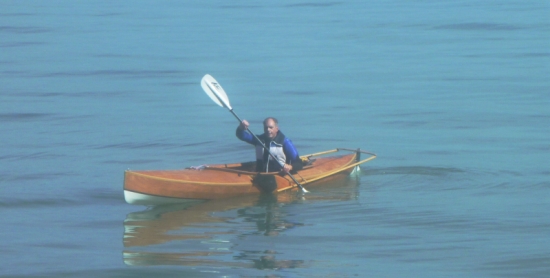| Language and Social Media |  |
 |
 |
 |
BUFFLEHEAD Sailing Canoe Safety
Security is a concept. Here, I present a capsize routine which works reliably under most conditions. In cold water, appropriate clothing like a wet or dry suit is part of the concept.
Flotation Bags
Due to the inflatable bags, the capsized and righted boat floats so high and dry that
it is not swamped anew by each wave. When the boat is righted, there is not much water in the cockpit.
I have optimized the arrangement of the four inflatable bags with many capsize trials. They weigh a total of 1,800 grams
and are strapped into the hull.
Hugh Horton, the Designer of BUFFLEHEAD, has also performed a series of capsize tests. Read them here and here.
Optimized Hull Shape
Generous freeboard, full ends, a deck which sheds spray easily and a high cockpit coaming help to
keep the boat dry in bigger waves. A dry boat is as safe as a cork on the water.
Hugh Horton, the Designer of BUFFLEHEAD, has written that wider boats are usually safer.
Safety-Related Components
All components of the BUFFLEHEAD sailing canoe are easy to handle in stronger wind and waves. Important features:
Practice Regularly!
Try to reef on the water, practice first in a calm.
Memorize the individual steps and their sequence. Does the reefing routine work even when
the wind whistles around your ears and shakes the sail?
Can you strike the rig on the water and stow it inside the boat? How many minutes do you
need?
The Easiest Capsize Routine
Capsizing is not dangerous and can even be fun - if you know what to do. First practice in light winds. The routine presented here is not the fastest, but the easiest. It works always - even in higher winds and waves and in cold water.
Is everything still in place inside the boat? The baggage - in watertight bags
and drums, tethered to attachment points - is unscathed and dry.
Now pick up the paddle and work hard so that you will get warm again.
This routine will motivate you to test your own limits and the limitations of the boat
carefully but without undue anxiety.










